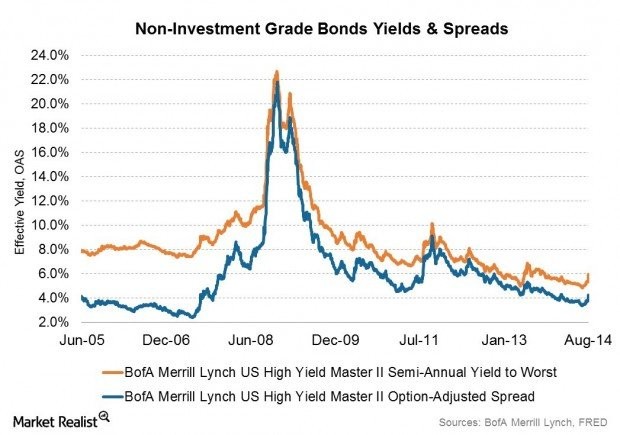Winning Returns From ShortTerm Junk Bonds
Post on: 13 Июнь, 2015 No Comment

NEW YORK ( TheStreet ) — Concerned about rocky markets, investors have been dumping intermediate-term bonds and shifting to short-term issues. Short-term bonds tend to be more resilient when interest rates rise. The flows have been particularly notable among high-yield funds, which hold bonds that are rated below-investment grade.
While investors have withdrawn $3.3 billion from the intermediate-term SPDR Barclays High Yield Bond (JNK ) this year, SPDR Barclays Short Term High Yield Bond (SJNK ) recorded inflows of $1.6 billion, and Pimco 0-5 Year High Yield Corporate Bond (HYS ) attracted $2.1 billion, according to IndexUniverse.com. Strong returns have attracted the cash. For the year, SPDR Barclays Short Term returned 3.5%, compared to 1.8% for SPDR’s intermediate term exchange-traded fund, according to Morningstar. In comparison, the Barclays Capital U.S. Aggregate index lost 3.2%.
For investors seeking to diversify fixed-income portfolios, the short-term high-yield funds can be intriguing choices. The short-term ETF gives you an attractive yield with less volatility than you get with longer bonds, says David Mazza, head of ETF investment strategy for State Street Global Advisors, which operates the SPDR funds.
SPDR Barclays Short Term currently yields 4.5%, compared to a yield of 5.9% for the intermediate-term SPDR high-yield ETF. In comparison, iShares Core Total US Bond Market (AGG ). which tracks the Barclays Aggregate, yields 2.5%.
Make no mistake, high-yield bonds of all kinds can suffer sizable losses in downturns. During the turmoil of 2008, the average high-yield mutual fund lost 26.4%, and short-term issues also suffered big losses. But below-investment grade bonds can be appealing because they can deliver solid long-term returns. During the past five years, the SPDR intermediate high-yield ETF returned 10.7% annually, compared to 4.6% for the Barclays Aggregate.
The most important reason to consider high-yield funds is they can help to diversify portfolios, sometimes rising when most bonds are falling. When rates climb, Treasuries and other high-grade bonds tend to fall as investors bid down existing bonds and search for new issues with higher yields. Rising yields can also hurt high-yield bonds somewhat because their income becomes less competitive. But high-yield bonds can appreciate during times when a growing economy is pushing up rates. In such periods, investors tend to bid up high yield prices because default risks are lower.














